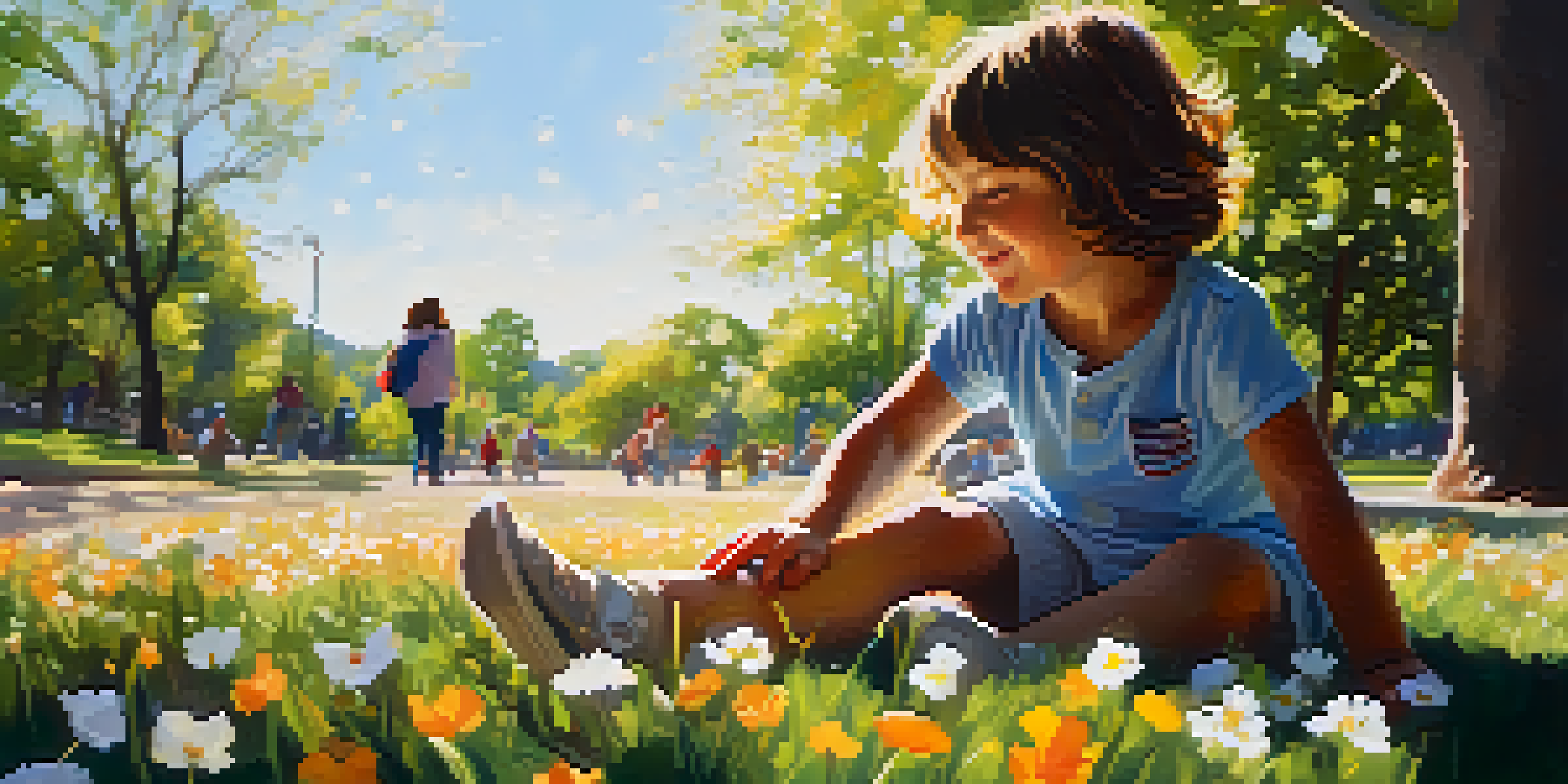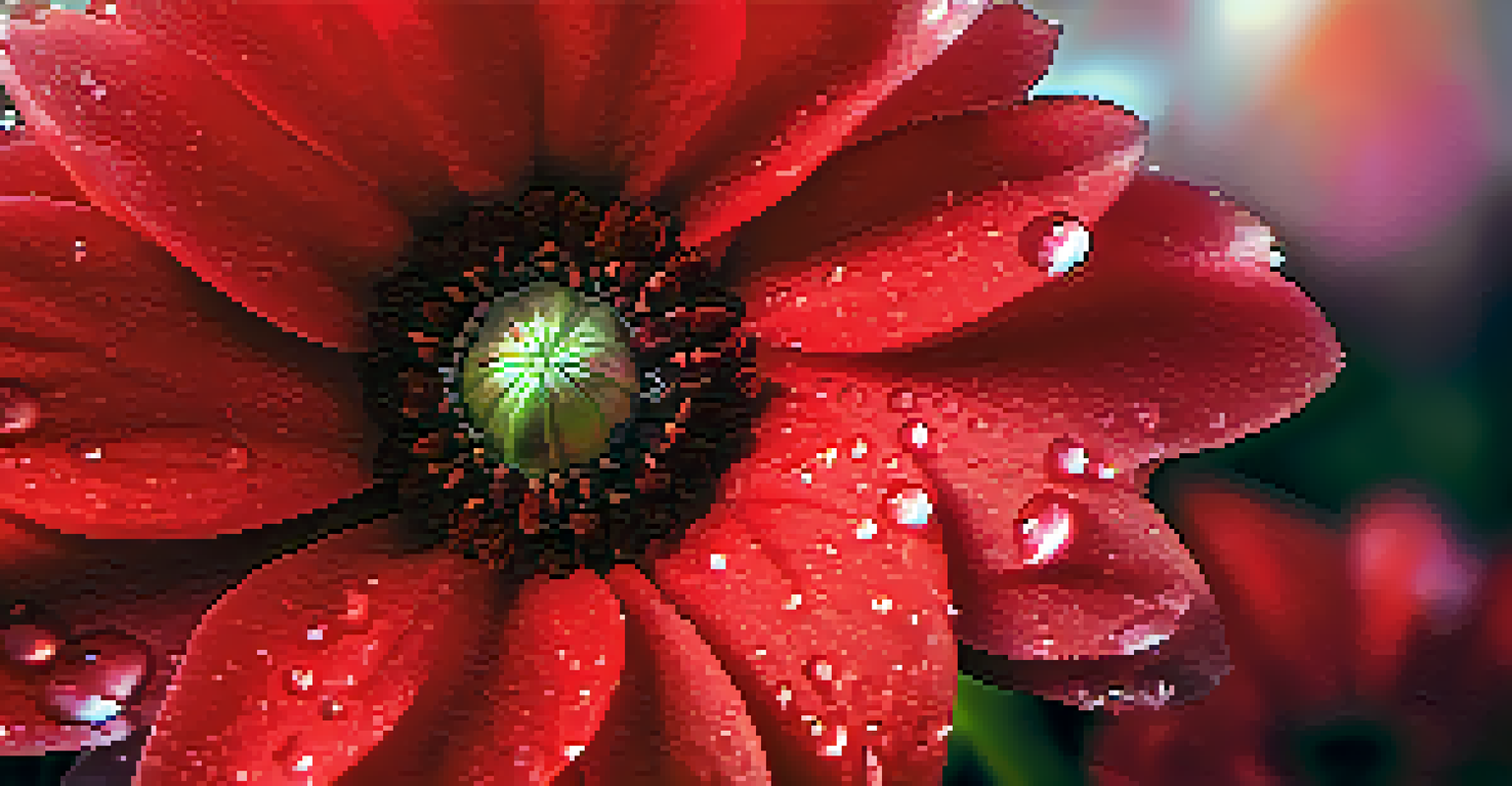Creative Perspectives: Unique Angles for Captivating Images

Why Unique Angles Matter in Photography
In photography, the angle from which you capture an image can dramatically change its impact. Unique angles draw the viewer's eye and can evoke emotions that standard shots often miss. For instance, shooting from a low perspective can make a subject appear more powerful or imposing.
Photography is the story I fail to put into words.
Additionally, unique angles can help tell a story. Imagine photographing a child at their eye level versus from above; the former invites viewers into their world, fostering a deeper connection. This perspective shift can turn an ordinary moment into something extraordinary.
Ultimately, experimenting with angles encourages creativity and innovation in your photography. It’s about breaking away from the conventional and discovering fresh ways to present your subject, making your images not only captivating but also memorable.
Exploring High and Low Angles
High and low angles are two of the simplest yet most effective ways to change the mood of your photographs. A high angle can create a sense of vulnerability or insignificance, while a low angle often conveys strength or dominance. Think about how superhero movies frequently use low angles to emphasize a character's power.

When you shoot from a high angle, consider how it alters the viewer's perception. It can make a busy street scene feel chaotic or a serene landscape appear expansive. Conversely, capturing an image from below can transform an ordinary flower into a towering giant.
Unique Angles Enhance Impact
Capturing images from unique angles can dramatically change their emotional impact and storytelling potential.
Both angles provide unique storytelling opportunities. By consciously choosing your perspective, you can guide the viewer's emotions and reactions, making each shot more impactful and engaging.
The Power of Dutch Angle Photography
The Dutch angle, or tilt shot, introduces a sense of unease or tension in your images. By tilting your camera, you can create a dynamic effect that captures attention and suggests action or chaos. This technique is commonly used in film and can be equally powerful in photography.
The best camera is the one you have with you.
Imagine capturing a bustling city street with a Dutch angle; the tilted perspective can communicate the hustle and bustle of urban life or the dizzying pace of modern existence. It invites viewers to feel the energy of the scene rather than just observe it.
Experimenting with Dutch angles encourages you to think outside the box. This creative approach can lead to surprising results that challenge the traditional norms of photography, making your work stand out.
Incorporating Natural Frames in Your Shots
Natural frames, such as branches or doorways, can add depth and focus to your images. By framing your subject within the environment, you guide the viewer's eyes directly to what matters most. This technique adds layers to your composition, making it more visually interesting.
For example, photographing a person through a window not only captures the subject but also tells a story about their surroundings. It invites the viewer to ponder what lies beyond the frame, enhancing the narrative quality of the image.
Context Adds Depth to Photos
Incorporating context into your shots helps convey powerful stories and enhances the viewer's emotional connection.
Utilizing natural frames encourages you to explore your environment more thoughtfully. By seeking out these elements, you can create unique compositions that resonate with viewers and elevate your photography.
Experimenting with Perspective: Bird's Eye View
A bird's eye view perspective offers a completely different vantage point that can transform ordinary scenes into captivating visuals. This elevated angle allows you to capture intricate patterns, shapes, and textures that may go unnoticed from ground level. Think about how aerial photos of cities reveal the beauty of urban design.
This perspective can be particularly effective in landscape photography, where the vastness of nature comes to life. Capturing a sprawling field or a winding river from above can evoke a sense of wonder and appreciation for the natural world.
However, achieving a bird's eye view can require some creativity. Whether it’s climbing a hill, using a drone, or even standing on a rooftop, this angle encourages you to explore new heights in your photography.
Utilizing Reflections for Unique Imagery
Reflections can be a powerful tool in photography, offering a unique way to capture your subject. Puddles, mirrors, and glass surfaces can create striking images that play with symmetry and perspective. For instance, photographing a city skyline reflected in water can create a dreamlike effect.
This technique adds visual interest and depth to your images, inviting viewers to explore the relationship between the subject and its reflection. It prompts them to consider multiple layers of meaning and context within a single frame.
Reflections Create Visual Interest
Utilizing reflections in photography can produce striking images that invite viewers to explore multiple layers of meaning.
Incorporating reflections challenges you to think creatively about your environment. By actively seeking out reflective surfaces, you can create stunning compositions that elevate your photography to new heights.
Close-Up Shots: Finding Beauty in the Details
Close-up photography allows you to delve into the intricate details of your subject, revealing beauty that often goes unnoticed. By focusing on textures, patterns, and subtle nuances, you can create striking images that captivate viewers. For example, a close-up of a flower can highlight its delicate petals and vibrant colors.
This approach encourages a slower, more thoughtful way of seeing the world. It invites you to appreciate the small things and find artistry in everyday objects, transforming the mundane into the extraordinary.

As you experiment with close-up shots, consider the lighting and composition to enhance the details. This meticulous approach can lead to breathtaking results that showcase the beauty of the world around you.
The Importance of Context in Your Shots
Context is crucial in photography, as it helps tell a story and provides meaning to your images. Including elements that reveal the environment or situation can enhance the narrative and emotional impact of your shot. For instance, a portrait set against a bustling market tells a different story than one taken in a serene park.
By incorporating context, you can create images that resonate on a deeper level. This technique invites viewers to connect with the subject and explore the relationship between the individual and their surroundings.
Remember that every photograph captures a moment in time. By thoughtfully considering context, you can craft images that not only look beautiful but also convey powerful stories and evoke emotions.